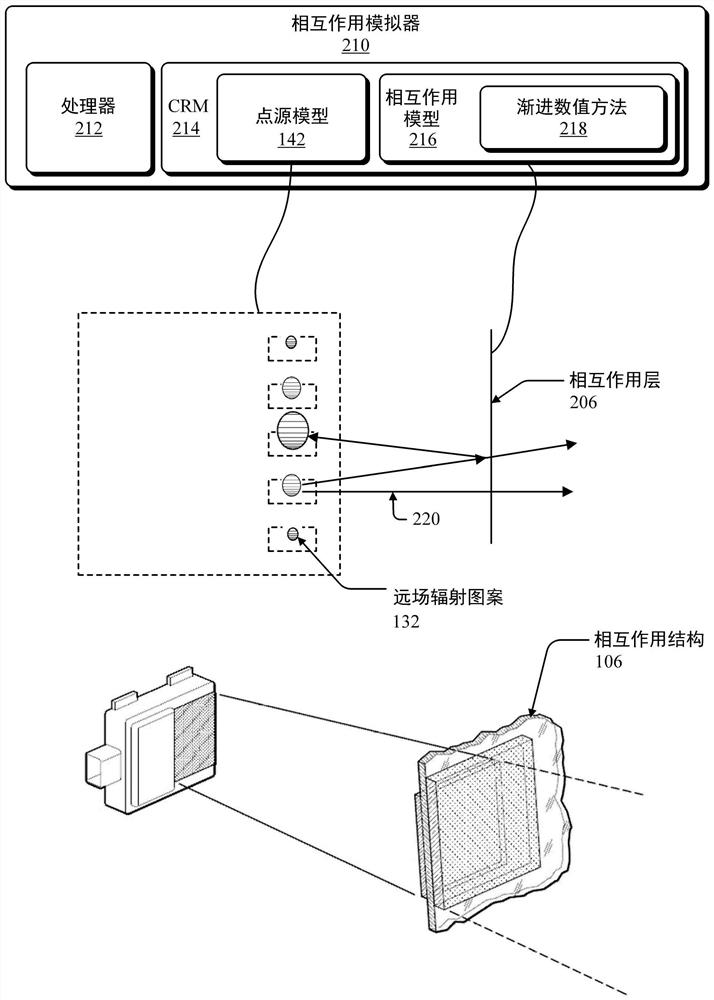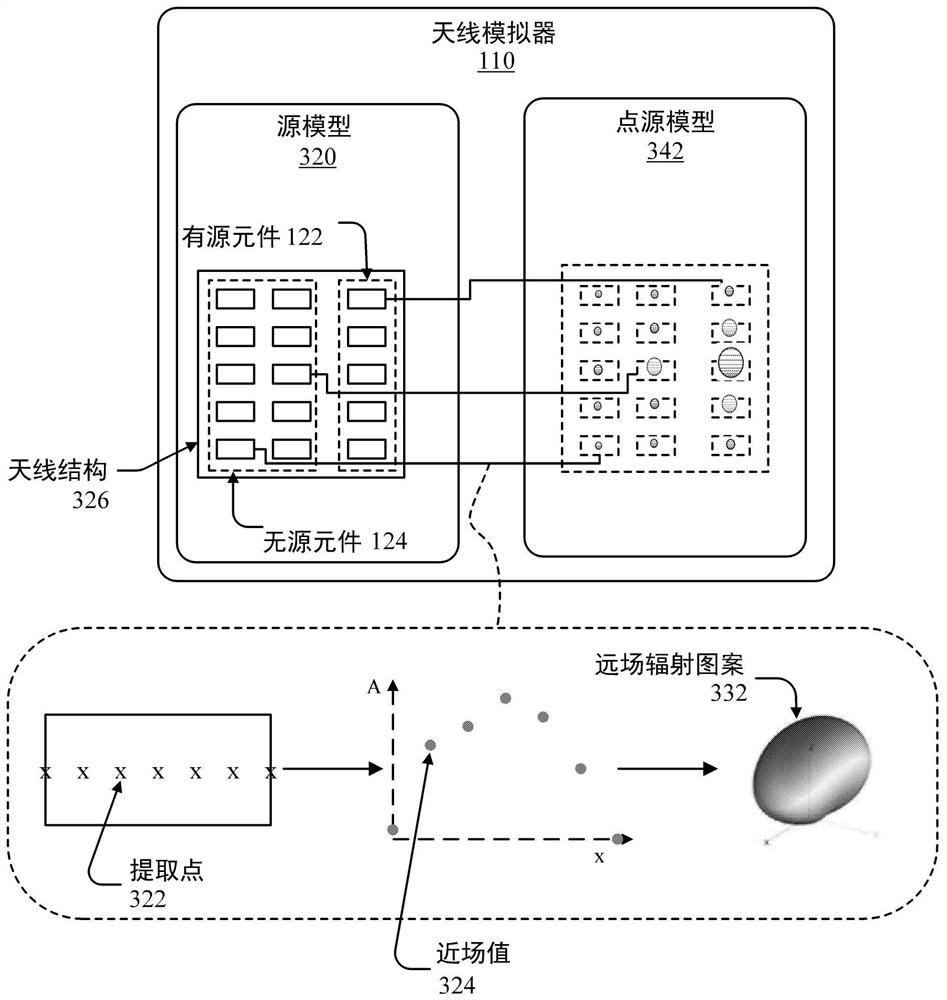Point-Source Model for Simulating Near-Field Effects From Structures of an Antenna
A technology of antenna structure and source model, applied in antennas, antenna arrays, antenna components, etc., to solve problems such as inability to simulate electromagnetic interactions
- Summary
- Abstract
- Description
- Claims
- Application Information
AI Technical Summary
Problems solved by technology
Method used
Image
Examples
example 1
[0064] Example 1: A method for generating a point source model of an antenna array comprising: generating a source model that models at least two active elements of the antenna array and an antenna structure of the antenna array; The electromagnetic radiation field radiated by the element into space, the simulation is based on the antenna structure modeled at a certain position in the electromagnetic radiation field; based on the interaction between the electromagnetic radiation field and the antenna structure, at least one near field values; generate a far-field radiation pattern for each active element, the generation being based on a near-field to far-field transformation of the near-field values of the respective active elements; and output a far-field radiation pattern that is useful for using An asymptotic numerical method is available for modeling the electromagnetic interaction between the antenna array and the at least one interacting structure, the asymptotic numeri...
example 2
[0065] Example 2: The method of Example 1, wherein the antenna structure of the source model includes a surface of the antenna array, a circuit board of the antenna array, a ground plane of the antenna array, a radome of the antenna array, a housing of the antenna array, or a passive element of the antenna array at least one of the
example 3
[0066]Example 3: The method of Example 2, wherein the antenna structure comprises: at least two passive elements, and at least one of said surface, circuit board, ground plane, radome, or housing; the method further comprising: based on an electromagnetic radiation field and interaction of the antenna structure, extracting at least one near-field value for each passive element; and generating a far-field radiation pattern for each passive element separately, the generation being based on a near-field analysis of the near-field value of the corresponding passive element to far-field transformation; and wherein the outputting of the far-field radiation pattern includes outputting the far-field radiation pattern of the active element and the far-field radiation pattern of the passive element.
PUM
 Login to view more
Login to view more Abstract
Description
Claims
Application Information
 Login to view more
Login to view more - R&D Engineer
- R&D Manager
- IP Professional
- Industry Leading Data Capabilities
- Powerful AI technology
- Patent DNA Extraction
Browse by: Latest US Patents, China's latest patents, Technical Efficacy Thesaurus, Application Domain, Technology Topic.
© 2024 PatSnap. All rights reserved.Legal|Privacy policy|Modern Slavery Act Transparency Statement|Sitemap



